As video takes over the digital landscape, many publishers and advertisers face wasted budgets, low engagement, and poor conversions. With video projected to make up 82% of all internet traffic by the end of 2025 and 93% of marketers already using it, mastering monetization and ad placement is essential.
This article explores the top video ad networks of 2025, their key advantages, and proven strategies to boost engagement and revenue.

Start working with the best video ad network HilltopAds today
so you don’t waste your budget on low-quality networks tomorrow.
What is a Video Ad Network
A video advertising network (or video ad network) is an online platform that brings together video inventory on websites, apps, or streaming services with video ad buyers who have an interest in advertising their services or products through video content.
As a middleman who benefits from the confidence of both parties, the network assists publishers in reaching high-quality ad demand and enables advertisers to reach their audiences on mass levels without the need to negotiate independently with publishers.
Video ad networks lie at the heart of programmatic advertising. They make large-scale video trading possible by collecting and organizing video ad inventory from numerous publishers, segmenting it by audience or content type, and offering it to advertisers in real time.
For individual sites and solo creators, joining such a network offers access to a global customer base of advertisers and running campaigns. Ultimately, video ad networks allow publishers to monetize their inventory in full while helping advertisers to improve targeting precision, transparency, and overall campaign effectiveness.
Video tells a story in seconds and drives stronger recall. With better mobile internet and autoplay formats, it’s often the most efficient way to capture attention.
Video is one of the fastest-evolving areas of online marketing. Video ad formats are more interactive than banners, enhance brand recognition, and permit more interactive storytelling.
Statista predicts spending on digital video advertisements globally will hit more than $210 billion in 2025, making it one of the largest online advertising channels. This video ad expansion reflects growing consumer demand, as people increasingly watch videos on the web and social platforms, and advertisers’ need for formats that deliver measurable results.
Read our recent article about the VIP Referral Program:
Benefits of Using Video Ad Networks
Video ad networks create value for both sides of the digital ecosystem: publishers gain new ways to monetize their video ad content, while advertisers benefit from broader reach and more efficient video ad campaign management. Let’s take a closer look at the advantages for each.
For publishers
High revenue
One of the greatest advantages for publishers is higher video ad revenue with smart optimization. Through the use of demand from hundreds of video advertising campaigns, video ad networks create competition that boosts eCPMs and overall yield.
Even mid-sized or niche publishers, who may not have leverage for premium direct deals, gain access to global demand for any video ad and broaden their monetization opportunities.
Variety of available offers
Using a single integration, publishers can monetize multiple verticals with their video ads from e-commerce and finance to gaming and entertainment.
This optimizes ad inventory utilization and ensures video ads are targeted to the right audience, driving higher engagement and completion rates.
Ease of integration
It’s a feature provided by most video ad networks through plug-and-play SDKs, ad tags, or APIs. This decreases technical barriers and allows publishers to start monetizing their video ad inventory without incurring a steep development barrier.
Diverse video ad formats
Besides default in-stream video ads, networks usually have out-stream video placements, rewarded videos, interactive video ad formats, and native video ad types on board.
This diversity allows publishers to align video ad experiences with content strategy and user expectation maximizing both engagement and revenue potential.
All in all, publishers get access to premium demand that’s hard to reach directly, plus higher eCPMs compared to banners. Many video ad networks also offer one-tag integration, which saves publishers time and resources.

Sign up on the HilltopAds platform and start earning like never before!
Get paid every Tuesday through convenient payment methods.
For advertisers
For the advertiser, the most obvious benefit is greater reach. Instead of having to negotiate with each publisher separately, advertisers get access immediately to a huge universe of sites, applications, and streaming sites.
This allows brands to scale quickly and target consumers across video ad channels.
Targeting
Video ad networks today boast precise ad targets from geo-location and device to interests, behaviors, and contexts.
They allow one to engage the correct audience with the correct message at the correct time, minimize wasted impressions, and maximize video ad ROI.
Easy budget control
By bringing video ad campaigns together under one platform, marketers can test out different video ad creatives, refine bid points, and route spend to the most effective places.
Integrated analytics provide insight into such performance metrics as viewability, completion rates, and conversions so that video ad campaign performance is easier to track.
To be successful, you need all three components – reach, targeting, and analytics. Quality reach is the baseline, but without accurate targeting and transparent reporting, even the biggest reach won’t deliver real ROI.
Ability to refine constantly
The majority of video ad networks utilize AI to dynamically modify targeting, frequency, and delivery in real-time. Advertisers can refine video ad campaigns in the field so that ad budgets are allocated where they will have the greatest influence.
For advertisers, AI already personalizes creative variations and automates bidding video ad strategies. In a couple of years, it will likely run most of the optimization loop with minimal human input.
Launch video ads with HilltopAds and enjoy:
- Advanced targeting options
- Direct traffic sources
- Self-serve platform
- Fully-managed service
- Postback tracking
Top-10 Video Ad Networks in 2025
With hundreds of platforms competing for popularity, it is hard to decide which video ad network is most suitable. A summary of ten best video ad networks in 2025 is provided below along with their benefit to both advertisers and publishers. Select a network that best aligns with your goals.
HilltopAds
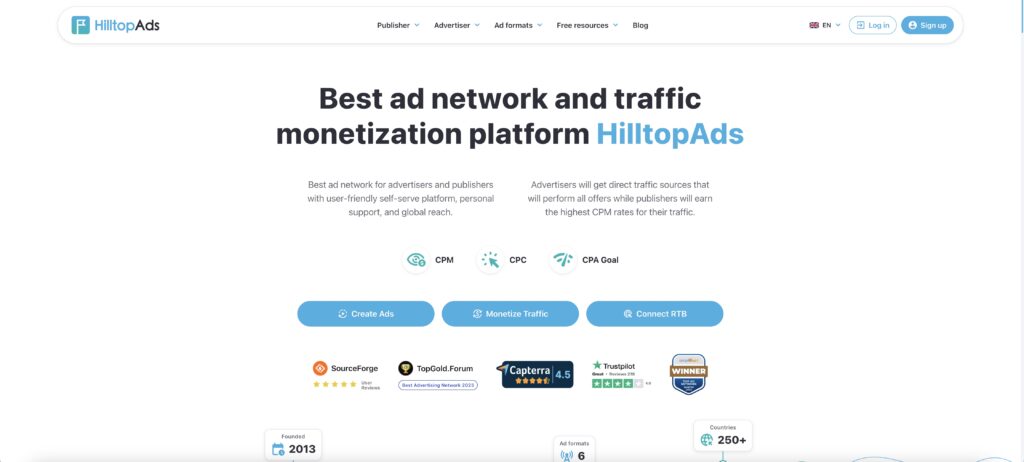
HilltopAds is a global performance-based ad network with open tools for efficient traffic monetization. Diversity of ad formats – Popunder and In-Page, Video VAST, Slider, Banners, and MultiTag – offer creative freedom to reach users across channels.
Auto-optimization intelligence with White/Black List functionality ensures campaign performance and gives you full control.
Publishers benefit from Anti AdBlock, advanced APIs, and weekly Net7 payouts. Only clean, pre-approved ads with smart link support ensure secure, optimized monetization.
Postback tracking and an intuitive dashboard let publishers monitor ad performance in real time.
Advertisers gain advanced targeting, direct traffic sources, and flexible campaign management. Combined with postback tracking, API integration, agency support, and clean traffic, these tools help maximize the efficiency and ROI of your video campaigns.
OpenX
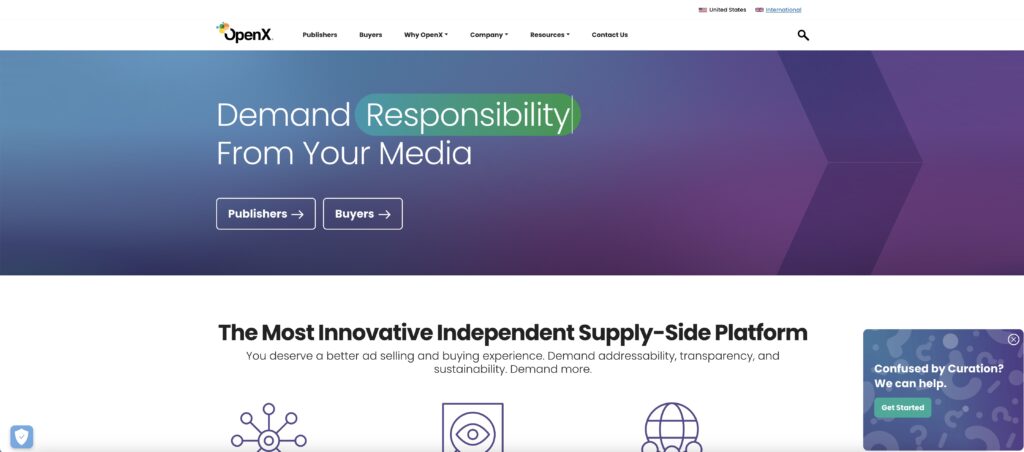
As one of the oldest players in programmatic ad inventory, OpenX has built a strong reputation for high-quality video ad inventory and innovation.
Publishers get premium demand, strong brand safety, and flexible video integrations, with OpenX’s header bidding and mobile-optimized programmatic deals maximizing ad impression value.
Advertisers enjoy transparency, advanced targeting, and global reach through private marketplaces and real-time guaranteed programmatic buys. OpenX’s mobile-first exchange and sustainable, flexible buying models help brands achieve responsible advertising performance.
ExoClick
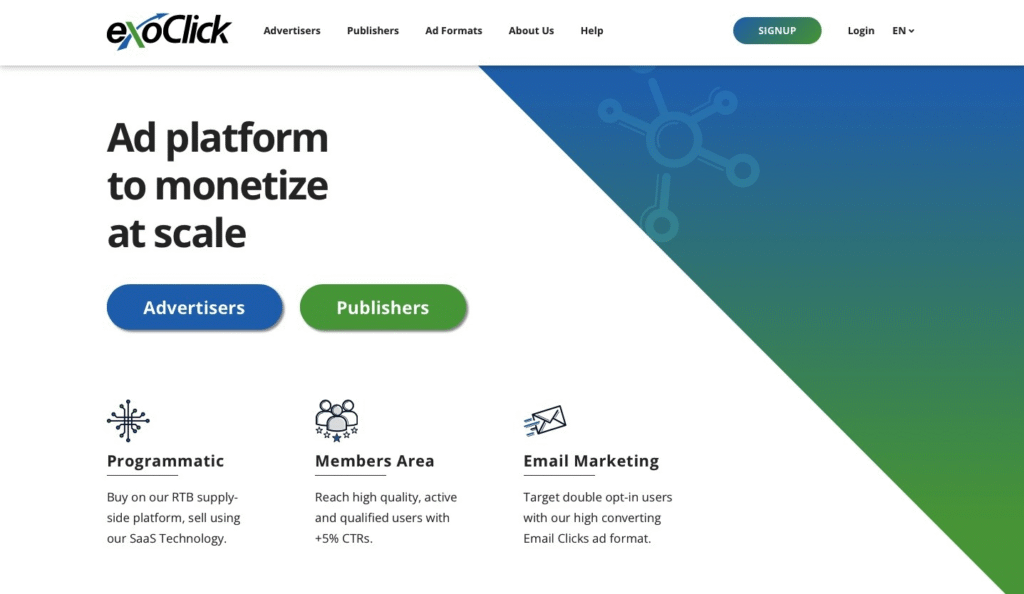
ExoClick combines global reach and flexibility, serving billions of daily video ad impressions.
Publishers value ExoClick’s global reach, reliable payouts, and 24/7 support. With diverse ad formats, instant stats, and smart tools like Campaign Manager, Adblock bypass, and Fluid Player, they optimize delivery and visibility across markets.
Advertisers benefit from precise targeting, smart bidding, and real-time optimisation that help boost video ad performance worldwide.
Primis
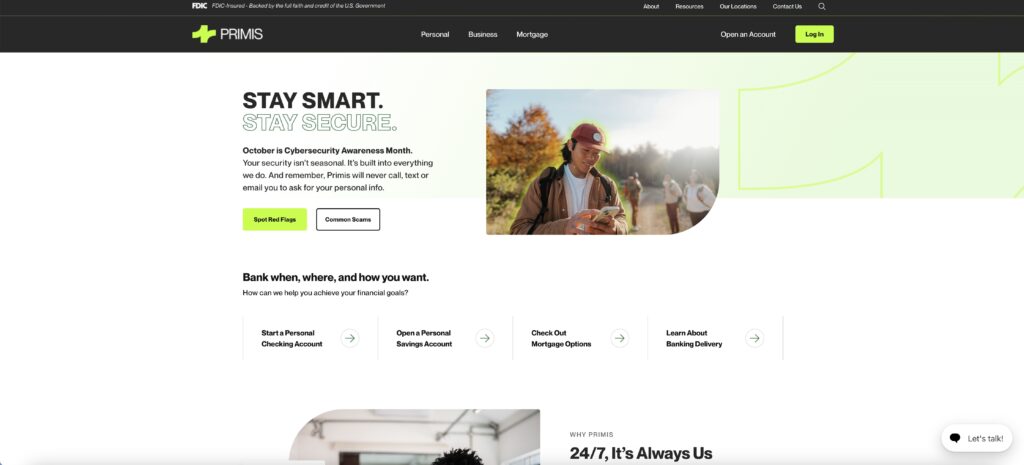
Primis is a publisher-first video discovery solution that specializes in native video ad placements.
Primis allows publishers to natively place any video ad without disrupting user flow, using an AI recommendation engine to deliver contextually relevant placements that maximize revenue and completion rates.
For advertisers, this results in a highly viewable, contextually aligned video ad that drives greater engagement and brand lift.
Teads
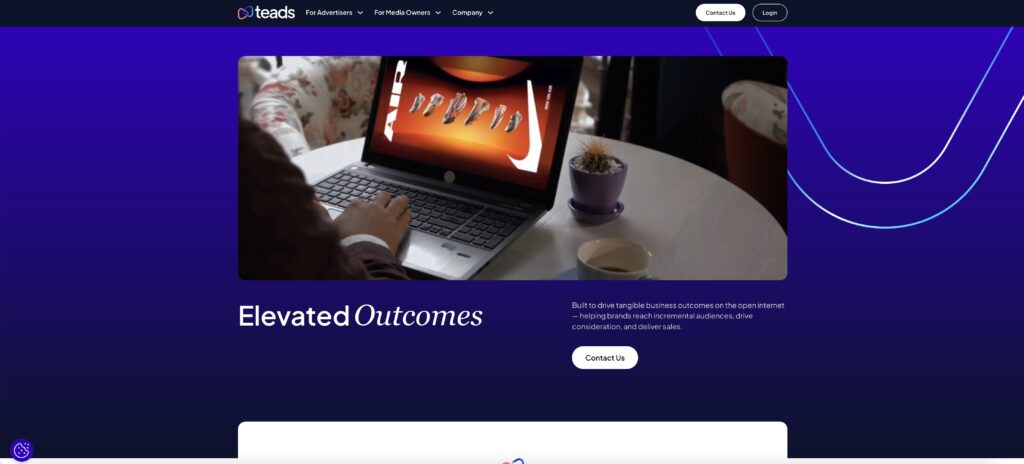
Teads invented out-stream video advertising and remains a leading provider of non-intrusive ad formats.
Publishers can earn from subtle video ads while leveraging Teads’ premium marketplace, safe environment, and worldwide reach for better results.
Advertisers access high-quality audiences across web, apps, and CTV, with impactful ad placements and streamlined access to premium supply, ensuring greater efficiency and results.
SelectMedia
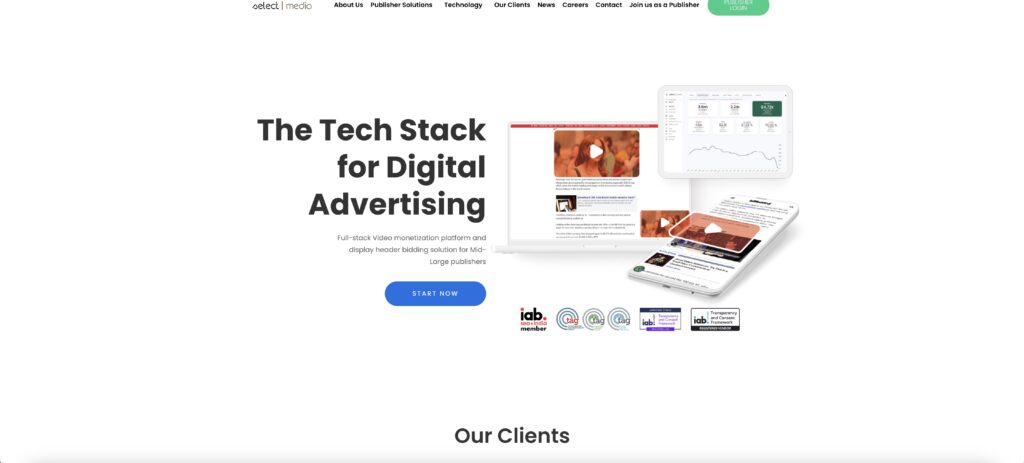
SelectMedia offers a full-featured video ad monetization platform with a focus on Asian growth markets.
SelectMedia helps publishers boost revenue with flexible video ad formats, premium advertiser access, high fill rates, and advanced tools like real-time dashboards and Vidsplay units for optimal viewability.
For advertisers, the platform provides targeted distribution, ad campaign selection, and transparent video performance reporting. Its strength lies in bridging the gap for advertisers seeking scale and publishers in fast-expanding digital economies.
Clickadu
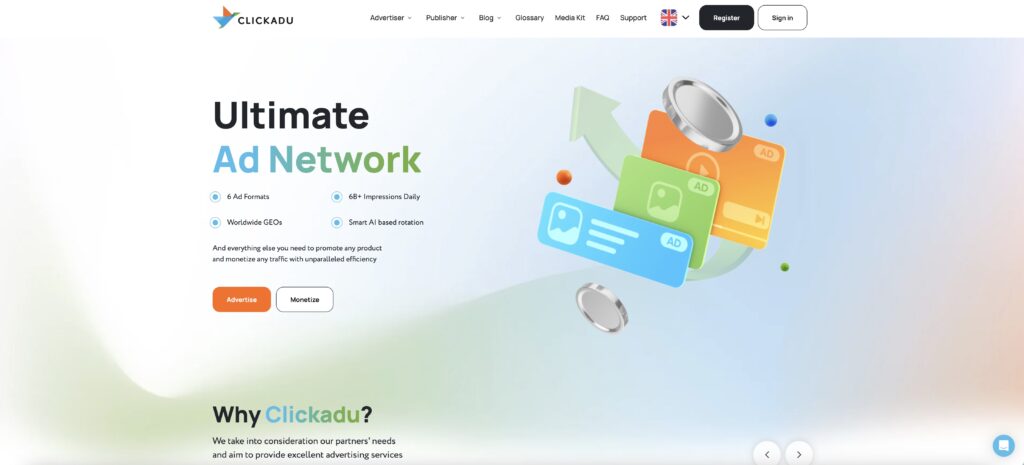
Clickadu is an international ad network offering advanced targeting and AI-powered rotation across multiple ad formats, including video.
Publishers enjoy competitive pricing, flexible banner placements, a Google-friendly format, and guaranteed 100% fill rate for optimized revenue.
Advertisers access rich traffic, wide geo coverage, CPC/SmartCPM/CPM pricing, audience optimization, and anti-fraud protection for high-quality, accountable ad campaigns.
Clickadilla
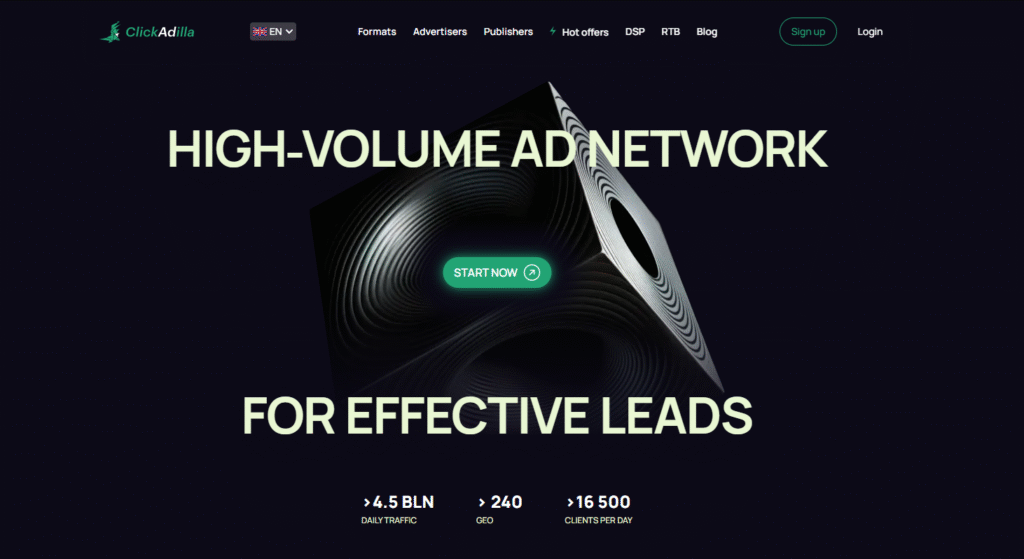
Clickadilla is a high‑volume ad network delivering flexible monetization for video content across mainstream and niche audiences.
Clickadilla provides publishers with live personal support, premium mainstream and adult traffic, real-time detailed statistics, and a single-tag setup for easy management of all ad formats.
For advertisers, it offers flat deals, guaranteed traffic volumes for specific GEOs, nonstop traffic flow, Traffic DSP integration, and API support for campaign management and analytics.
Equativ

Formerly Smart AdServer, Equativ is a full-stack ad tech company and a major player in video advertising.
Publishers benefit from Equativ’s all-in-one independent platform, combining advanced programmatic tools, yield optimization, and expanded CTV reach.
Advertisers access premium video inventory, advanced targeting, and brand-safe environments, while Equativ boosts campaigns with creative optimization, curated solutions, and sustainability-focused offerings for efficient global performance.
Google AdX
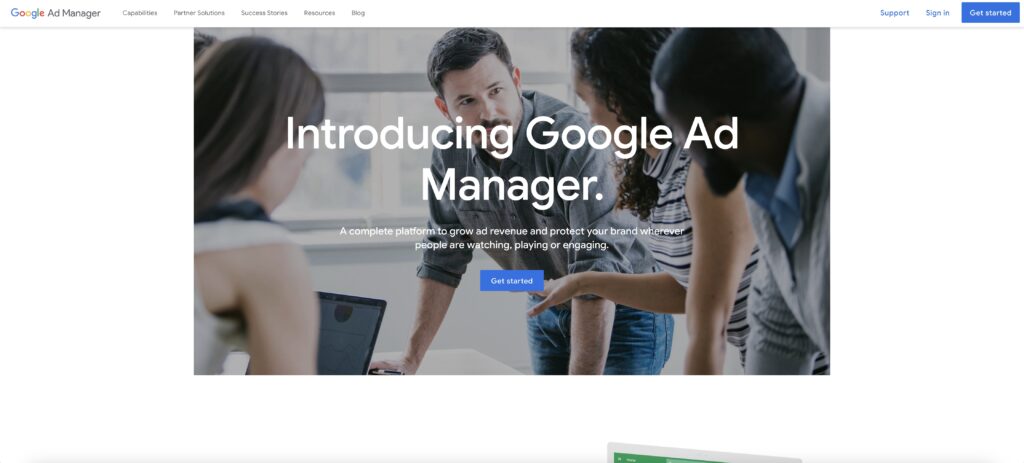
Google Ad Exchange remains one of the most powerful and largest video ad networks globally.
With Google Ad Manager integration and advanced yield tools, publishers reach top-tier demand and strong global fill rates.
Advertisers gain unparalleled reach, precise targeting, and dependable results across Google’s vast ecosystem.

Start working with the best video ad network HilltopAds right now
How to Choose the Right Video Ad Network
The most important step for publishers and advertisers is choosing the right video ad network, the one that fits their goals and delivers the best results.
For Publishers
When selecting a video ad network, publishers need to understand how effectively it can monetize their product without disrupting user experience. So, it’s also crucial to evaluate key performance metrics.
Publishers should first look at eCPM and fill rate – that’s their core revenue potential. It’s also important to check traffic requirements and network policies to avoid compliance issues later.
eCPM (effective cost per mille)
This is the key revenue metric that shows how much publishers earn per 1,000 impressions. The formula is:
eCPM = (Total Ad Revenue / Total Impressions) × 1,000
Example:
If a publisher earns $100 in revenue from 20,000 ad impressions, the calculation is:
($100 ÷ 20,000) × 1,000 = $5.00
This means the publisher effectively earns $5.00 for every 1,000 impressions.
eCPM is one of the most important video ad metrics because it allows publishers to compare across different ad formats, networks, and campaigns.
More robust demand from advertising buyers and more efficient optimization technology usually go hand in hand with higher eCPMs. Compare past averages across video ad networks and beware of seasonal variations.
Fill rate
It shows the percentage of ad requests that are successfully filled with a video ad. Low fill rates, even with a high eCPM, can lead to a significant loss of revenue from unsold impressions. Stable video ad networks aim for high fill rates to avoid wasted opportunity.
The formula is:
Fill Rate = (Filled Impressions ÷ Total Ad Requests) × 100%
Example:
If a publisher sends 100,000 ad requests and 70,000 of them are filled with video ads, the calculation is:
(70,000 ÷ 100,000) × 100% = 70%
This means that only 70% of available video ad inventory was monetized, while 30% of impressions went unfilled. A higher fill rate indicates more efficient use of ad space and less wasted revenue potential.
Multi-source demand video ad networks, advanced optimization, and programmatic bidding also contribute to higher fill rates.
For publishers, it’s as important to monitor this metric as it is to monitor eCPM because together they determine actual monetization potential for video ad inventory.
Video ad formats
A diverse set of video ad formats allows publishers to experiment and find what works best for their audience. Some video ad formats are more user-friendly and can increase engagement, while others generate higher revenue.
- Pre-roll video ad plays prior to playing the video content. It is highly visible and tends to gain high completion rates but can potentially cause drop-offs if they are long or repetitive.
- Mid-roll video ad is placed inside the video content. It basically has greater engagement since viewers are already invested in watching. However, poor placement or excessive ad frequency can also discourage viewers from video watching.
- Out-stream video ad appears outside of video content, for example, within feeds or articles. This ad is helpful to publishers who have limited ad inventory to monetize text pages, but the performance highly depends on the video placement and attention.
- Rewarded video ad is most prevalent in apps and gaming. Users receive rewards, such as additional lives or access to free content, for watching the video ad. This type of video ad is typically high in completion rate and has positive user attitudes.
- Native video ad that tries to blend in with the surrounding content. It’s less intrusive and more likely to build trust with the viewer and is well-suited to brand storytelling but may generate less short-term revenue than more obtrusive alternatives.
For publishers, combining several of these video advertising formats allows experimentation, while advertisers can match creative video ad strategies to the environments that best engage their target audiences.
Traffic requirements
Most networks also include minimums for monthly impressions or unique visitors. Small publishers will look for video ad networks with lower hurdles, while larger sites may prefer premium video ad networks with higher-end deals and more favorable monetization terms.

Sign up with HilltopAds and monetize your traffic at top rates
For Advertisers
Advertisers, meanwhile, should evaluate how effectively a video ad network can deliver quality traffic and measurable results.
Start by assessing inventory quality and fraud protection, then consider pricing models and targeting depth to reach the right audience efficiently without overspending.
You should also look at the key factors that define how transparent and effective your campaigns can be.
Targeting options
The ability to target by device, context, location, interests, and demographics is useful to reach the right people. Advanced video ad networks also offer lookalike and behavioral targeting, which can optimize efficiency and reduce wasted impressions.
Pricing models
Advertisers should carefully review a video ad network’s pricing structure before launching ad campaigns.
- CPM (Cost per Mille): Most common video ad model. Advertisers pay for every 1,000 impressions of the ad. Best for reach and brand awareness video ad campaigns.
- CPV (Cost per View): Payment is only activated when a user actually watches the video advertisement. This model is ideal for engagement-based video advertising campaigns.
- CPC (Cost per Click): Payment is made for each click on a video ad, regardless of whether the user takes any further action. This is a traffic-based system.
- CPA (Cost per Action): The advertiser pays only after a specific action has been executed, such as a sign-up, subscription, or a purchase. It is a purely performance-based system directly tied to conversions.
The right model depends on video ad campaign goals, whether the priority is broad reach (CPM), guaranteed engagement (CPV), traffic (CPC), or measurable conversions (CPA).
Reach and scalability
A quality video ad network should provide both the depth and breadth of video advertising inventory. Global reach allows brands to access new markets, while specialty placements can provide higher engagement in vertical niches.
Quality of placements
All impressions are not created equal. Advertisers have to make sure that their video ads will appear on relevant sites and next to their preferred content. Video ad networks that partner with reputable publishers or use brand safety verification offer greater value.
Check out our recent article where we announced an Exclusive Playbook for launching ads:
Conclusion
Video ad networks have become an essential part of the digital era, connecting publishers eager to monetize their content with advertisers looking for effective ways to engage users.
For the publishers, they are an entry to constant revenue, hassle-free integrations, and flexible advertising formats. To the advertisers, they are an entry to high-quality video ad inventory, advanced targeting, and open reporting that allows every ad dollar to intelligently work.
The rapid growth in global video ad spending shows that this model is here to stay, rather than a passing trend towards the approach between brands and consumers.
With billions of dollars to be invested in video ad campaigns, the role of video ad networks will become even more crucial in helping both parties make it big.
Still, no single video advertising platform fits everyone. The right video ad network for a small publisher may differ from what a global brand needs. This is why it’s crucial to test, compare, and optimize at all times on several video ad networks.
With responsible attention to key metrics such as eCPM, fill rate, video ad quality, targeting, and transparency, publishers and advertisers alike can obtain the balance that powers sustainable growth.
If you’re looking for a place to start, HilltopAds offers an accessible and transparent environment to launch video campaigns, experiment with formats, and grow results safely.
Finally, video advertising networks are your partners in scaling for visibility, revenue, and impact. The smartest move today is to test multiple video ad networks and unlock the full potential of video advertising in 2025 and beyond.






















